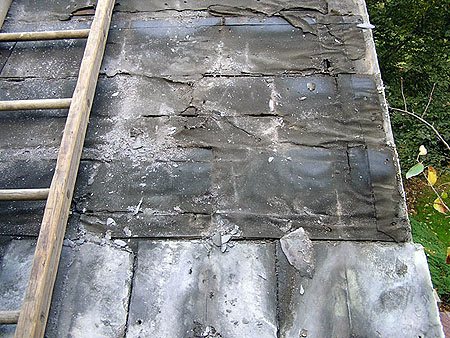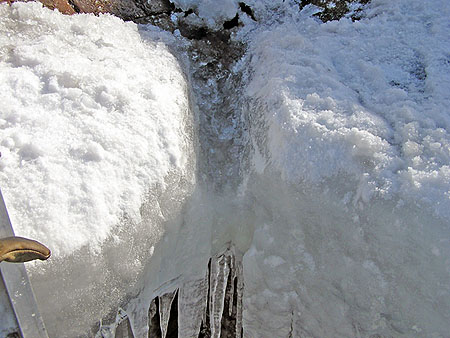
Ice Dam Leaks
- Category: Ice Dams
- Written by Administrator
Ice Dams and Roof Leaks near Cleveland, Ohio
Repair and Prevention of Ice Dams
Roof and Attic Ventilation
These are some typical examples of ice damming and the resulting roof leaks from houses located near Cleveland and Northeast Ohio.
Ice dams are usually caused by a couple different factors all working together at the same time.
Warm attic space and sun induced snow melt on the roof will cause water to run down the roof to the cold eaves of the house. Where the water meets the cold roof edge it freezes and builds up into an ice dam causing a pool of water. Eventually this water finds it's way under the roofing and into the house.
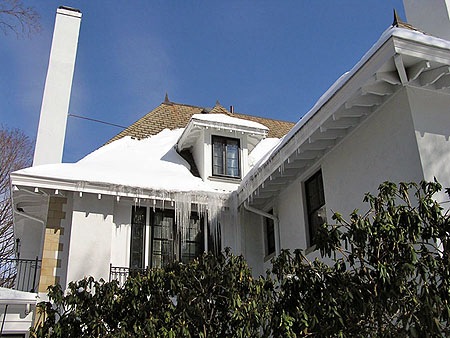
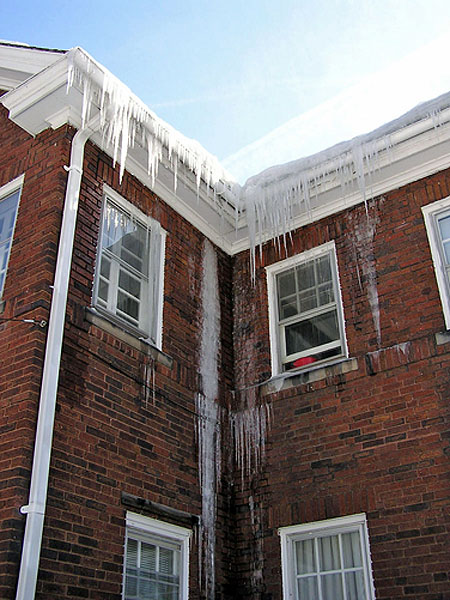
This picture shows the pool of water that has gathered at the bottom of a slate roof valley (the area where two roof pitches meet) just above the gutter near the interior wall of the house.
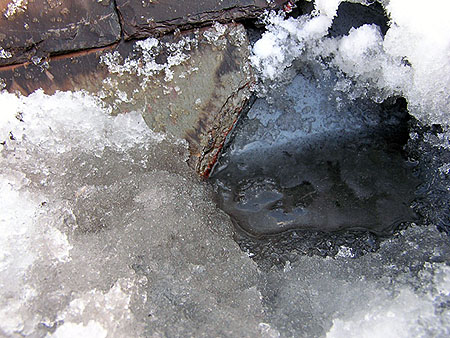
For the first 60-70 years since this house was built, that leaking water would have been kept out of the house by the roofing underlayment. Usually heavy, 30lb or heavier, roofing tar paper. Over time that tar paper has dried out and deteriorated to such an extent that it is now powder under the slate.
Steps to relieve leaking from ice dams and water backup.
The immediate cause of ice dam leaks is snow buildup on the roof that has begun to melt for various reasons and pool behind ice buildup at the roof eave.
Remove the excess snow in the vicinity of the leaking area first.
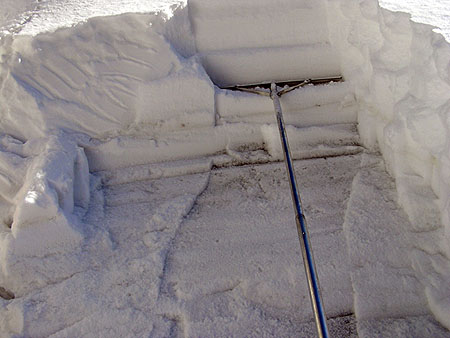
Use a snow shovel, or for better results and safety, use a snow rake. A large piece of sheet aluminum attached to a long handle. Remove the snow to one or two inches above the roofing material. Be careful not to dig into or catch and damage the roofing material. You could make the leak much worse.
Remove the ice dam to allow the water to drain from the roof.
Using a small sharp ax, cut a path or channel for the water to drain from behind the ice dam. This is the dangerous part and should only be attempted by an experienced and patient roofer who is comfortable on a ladder. It is very easy to get carried away and chop through the ice into the shingles or guttering. Safety glasses should be worn to protect from flying ice chips. It is not necessary to remove the remaining ice from the eave. It will eventually melt. It can also be dangerous as heavy falling ice chunks can easily damage surrounding shrubs or knock a ladder off kilter causing a fall.
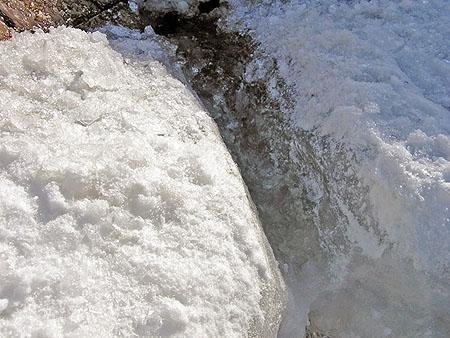
Melt the ice around the gutter.
Do not use a torch!
Spread some sidewalk ice melting granules in and around the ice dam area. This works fairly quickly and you will soon have a clear path for the remaining water melting off the roof to follow.
Install a temporary ice and snow heating cable.
If you expect more snow and possibility of ice damming, and the remaining roof and gutter are still full of ice, you can temporarily wrap a heating cable around the gutter and a short ways up the cleared ice dam channel. Run the cable around the downspout or to the ground so the water will not freeze at the roof or gutter line.
Repair and prevention of ice dams
Once the interior insulation and ventilation issues are dealt with, the exterior problems need to be addressed.
Many ice dams and leaks are relegated to a small part of the roof.
Valleys, where two roof pitches meet, are usually the most vulnerable. The opposing slopes reflect the sun and heat towards each other and make for natural heat collectors that melt the snow faster. The water then runs down the center of the valley flashing and into the gutter. Usually the water will be warm enough to run partially down the downspout before it starts to freeze. As the ice fills the downspout and then the gutter, it begins to pool and back up the roof.
Low sloping shed roofs are also prime targets. These are usually neglected when installing insulation and ventilation and are subject to more snow buildup.This is the area where ice and water shield is most important. Depending on how severe the ice dam is, the roofing material in the valley area will need to be removed to the decking and the ice shield installed. There are many brands of ice and water shield. I am partial to the Grace product. It was the first product, in a manufactured form, and is still one of the best. Before ice and water shield membrane roofers would install layers of roofing felt sealed to the roof with plastic roof cement to prevent the ice dams. Ice shield installed two to three feet past the interior wall is usually enough to take care of most leaks. If the snow fall and buildup is severe, more should be installed.
Photos and information by Dennis M. Crookshanks Construction Inc. Slate and Copper Roof Restoration and Repair
Serving Greater Cleveland, Cleveland Hts., Shaker Hts., Lakewood, Bratenahl and Northeast Ohio. 440 285-3200

